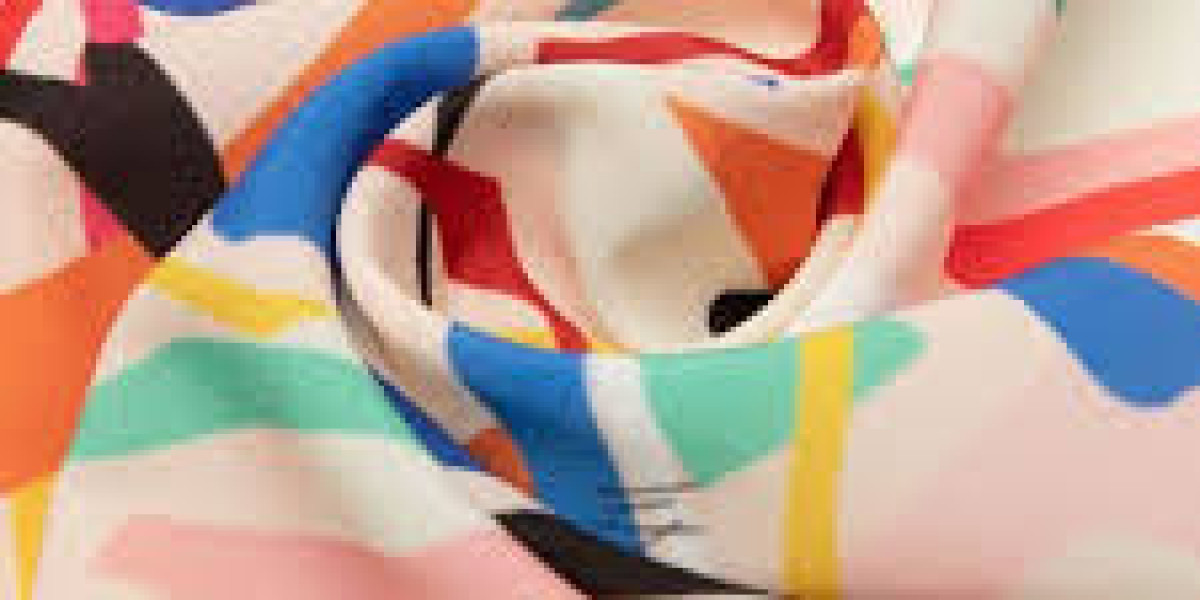The textile industry has witnessed a remarkable transformation in recent years, driven by advancements in digital technology. One of the most significant breakthroughs is digital printing on fabric — a process that allows intricate designs, vivid colors, and unlimited creativity to come to life on textiles with precision and efficiency. Unlike traditional printing methods that rely on screens or rollers, digital printing directly applies ink onto the fabric using computer-controlled printheads, much like a high-tech inkjet printer.
This modern technique has redefined how designers, fashion brands, and manufacturers approach textile production. From custom fashion collections to interior décor fabrics and home textiles, digital printing is now the cornerstone of high-quality, sustainable, and creative fabric production.
What is Digital Printing on Fabric?
Digital printing on fabric is a process of applying designs and patterns directly onto textiles using digital inkjet technology. It enables exact replication of digital designs on different fabric types such as cotton, silk, polyester, and blends.
The designs are printed using special textile inks that penetrate the fibers, ensuring vibrant colors, fine details, and excellent durability. The technology eliminates the need for traditional screens or plates, making it ideal for short runs, prototypes, and customized fabric printing.
Digital printing can produce gradients, photographic images, and complex color patterns that traditional methods cannot achieve — all with reduced waste and faster turnaround times.
How Does Digital Printing on Fabric Work?
The digital fabric printing process combines design precision with scientific fabric treatment and high-end machinery. Here’s a breakdown of the main stages:
Design Creation and Preparation
The process begins with a high-resolution digital design, typically created using software like Adobe Photoshop or Illustrator. The design is then color-calibrated for accuracy and prepared for printing using RIP (Raster Image Processor) software.Fabric Pre-Treatment
Before printing, fabrics are pre-treated with a special coating to help the ink adhere properly to the fibers. This ensures color brightness, sharpness, and durability.Printing Process
Using a digital textile printer, the design is printed directly onto the pre-treated fabric. These printers use micro-droplet technology to spray ink precisely where needed, ensuring high-definition prints and smooth gradients.Fixation or Heat Setting
After printing, the fabric is either steamed or heat-pressed to permanently set the ink. This process helps the color bond with the fabric fibers.Washing and Finishing
Post-print washing removes any excess ink or pre-treatment chemicals, and the fabric is dried and finished to achieve a soft, smooth texture.
Types of Digital Printing on Fabric
Different digital printing technologies cater to different fabric types and applications. The main methods include:
Dye-Sublimation Printing
Works best on polyester and synthetic fabrics.
The design is first printed on transfer paper and then heat-pressed onto the fabric.
Produces vibrant, durable prints that are resistant to fading and washing.
Commonly used for sportswear, banners, and home décor.
Reactive Dye Printing
Ideal for natural fabrics like cotton, linen, and silk.
The ink reacts chemically with the fibers, creating long-lasting, color-rich designs.
Offers excellent wash and rub fastness.
Suitable for high-end fashion and home textiles.
Pigment Printing
Uses pigment-based inks that sit on the surface of the fabric.
Works on both natural and blended textiles.
No steaming or washing required, making it an eco-friendly option.
Preferred for short runs and fast production cycles.
Acid Dye Printing
Specifically used for protein-based fibers such as wool, silk, and nylon.
Produces brilliant, soft, and deep colors.
Commonly used in luxury apparel and scarves.
Direct-to-Fabric (DTF) Printing
Prints directly onto the textile without transfer paper.
Provides fast results, ideal for bulk fabric printing.
Ensures color consistency and detailed designs.
Advantages of Digital Printing on Fabric
Digital fabric printing has numerous benefits that make it the preferred choice for modern textile production:
Unlimited Design Possibilities
Designers can experiment with intricate patterns, photographs, gradients, and custom artwork without the limitations of screen-making or color restrictions.
Cost-Effective for Small Runs
Unlike traditional printing, which requires setup costs for each design, digital printing has no setup limitations. This makes it perfect for small batches, samples, and custom orders.
Eco-Friendly Production
Digital printing uses less water, fewer chemicals, and minimal fabric waste, making it one of the most sustainable textile printing options available.
High Precision and Color Accuracy
The use of advanced digital technology ensures fine detailing, sharp lines, and color consistency across the entire fabric roll.
Quick Turnaround Time
With no screen preparation or lengthy setup processes, digital printing allows manufacturers to produce designs faster — crucial for fast fashion and custom orders.
Minimal Waste
Because designs are printed directly and digitally controlled, there’s virtually no ink or fabric wastage. This reduces environmental impact and production costs.
Applications of Digital Fabric Printing
Digital printing has found its place across various industries, including:
Fashion and Apparel: Custom garments, designer collections, scarves, and accessories.
Home Furnishing: Curtains, upholstery, cushion covers, and bed linens.
Sportswear: Lightweight, breathable prints for jerseys and activewear.
Interior Design: Custom wall art, upholstery, and home décor fabrics.
Event and Promotional Textiles: Banners, table covers, and personalized products.
Challenges in Digital Fabric Printing
While digital printing offers countless benefits, it also comes with a few challenges:
Initial Equipment Costs: The printers and inks are expensive, especially for large-scale production.
Fabric Compatibility: Not all fabrics can hold digital inks effectively without pre-treatment.
Maintenance: Digital printers require regular calibration and cleaning for optimal performance.
Speed for Bulk Orders: For very large quantities, traditional printing methods may still be faster.
Future of Digital Fabric Printing
The future of digital fabric printing looks incredibly promising. As sustainability and customization become key priorities for consumers, this technology is expected to dominate the textile industry. Innovations such as 3D printing, smart textiles, and on-demand production will further push the boundaries of creativity and efficiency.
Additionally, advancements in ink formulations, printer speed, and color management will make digital printing even more affordable, scalable, and eco-conscious. The ongoing shift towards eco-friendly inks (like water-based pigment inks) reflects the industry's move toward greener, more responsible manufacturing practices.
Frequently Asked Questions (FAQs)
What fabrics are best for digital printing?
Digital printing works best on fabrics like cotton, silk, polyester, rayon, and blends. The fabric choice depends on the printing method and ink type used.
Is digital fabric printing environmentally friendly?
Yes. Digital printing uses less water, fewer chemicals, and produces minimal waste compared to traditional screen printing, making it one of the most sustainable textile printing methods.
How long do digital prints last on fabric?
With proper care, digital prints can last as long as traditionally printed fabrics. Durability depends on the ink type and post-treatment process.
Can digital printing reproduce photographic images on fabric?
Absolutely. Digital printing allows high-resolution image reproduction with fine detail and color accuracy, making it perfect for photo-realistic designs.
What is the difference between sublimation and direct-to-fabric printing?
Sublimation involves transferring prints from paper to fabric using heat (best for polyester), while direct-to-fabric printing prints the design directly onto the fabric (suitable for various fabric types).
Conclusion: The Future is Digitally Printed
Digital printing on fabric has undeniably reshaped the textile world. With its efficiency, eco-friendliness, and limitless creative freedom, it’s redefining how designers and manufacturers approach fabric production. Whether for custom apparel, interior décor, or fashion innovation, digital printing empowers creators to bring their imagination to life with precision and sustainability.






